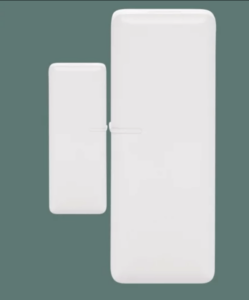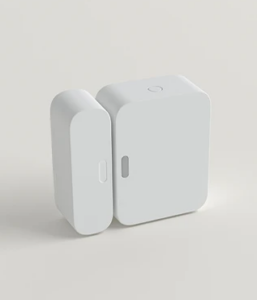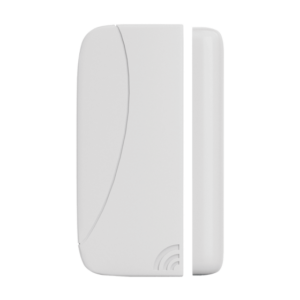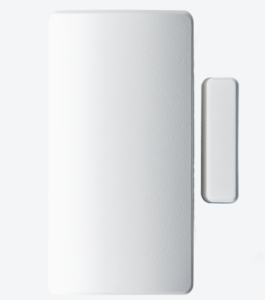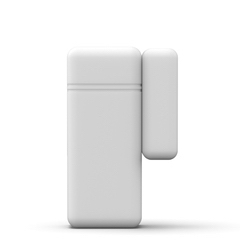Window sensors seem a little mystical, but it’s just cool science
How Does a Window Sensor Work? And Other Important Questions
Sensors that know when your windows are open or closed? It kinda sounds too good to be true—but it’s not!
We’ll explain why you might want a window sensor, how it works, which one is best for you, and how to install it.
Why use a window sensor?
Window sensors are one of the most basic but effective ways to secure your home. Intruders favor windows because they’re an easy route into a house.
Protecting your windows makes it crazy difficult for an intruder to get in.
Some window sensors can also be connected to many other devices in your smart home hub.
How does a window sensor work?
The quick-and-dirty answer is magnets.
The more complicated answer is that the sensor comes in two pieces, one for each side of the window frame. One side contains a magnet. The other contains a little thingummy called a reed switch. Like Romeo and Juliet, the magnet and the reed switch long to be together. As long as they’re close enough to sense each other, all is well.
But when the window opens, the two halves are torn asunder. The loss of magnetic connection flips the reed switch, which causes the alarm to go off.
Ta-da! Now you know there’s an intruder in your home.
(To help you get the idea, we’ve included a photo of a Vivint door sensor that works on a similar principle.)
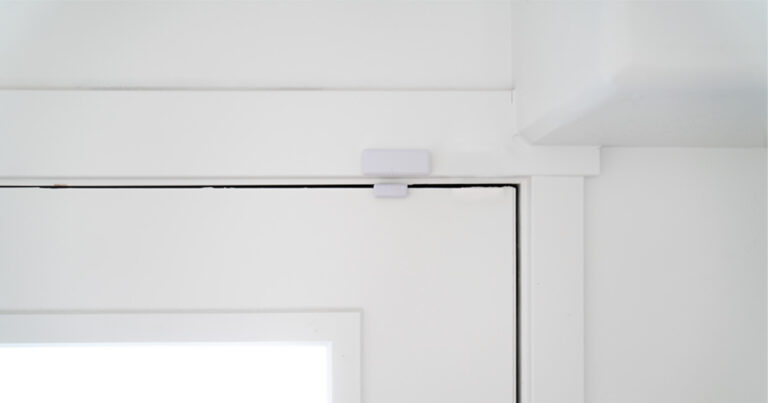
If you’re worried about broken windows, you’ll also want a glass break sensor. This handy-dandy smart device listens for the tinkling sound of breaking glass.
Which window sensor should I choose?
Window sensors come in a lot of options.
First, you have to decide if you want wired sensors or wireless. While some sensors are hardwired into the home electrical system, most security manufacturers offer wireless sensors only. If you want wired sensors, it’ll take a little more work to find them. (Or not, since we found some for you.)
Your second choice: should you buy standalone sensors or sensors that are part of a bigger home security system? We typically recommend the full home security system approach because there’s more built-in protection. A full home security system typically includes the sensors, motion detectors, a hub or control panel, and maybe some security cameras.
Data effective 08/01/2022. Offers subject to change.
A lot of home security companies sell combined door/window sensors—you pick where you want to use them. And some companies, like Ring Alarm, call their door or window sensors “contact sensors” or “entry sensors.”
If you want sensors only, you can try a standalone kit like this one from Fuers.
How do you install a window sensor?
Some window sensors require professional installation, but some you can install yourself.
Sensors should work equally well on windows that slide and windows that swing open. Just note that the two sensor halves usually need to be on the same plane to work.
If one half is on a taller surface than the other, the magnet may not meet the reed switch. In that case, you might want to look for a recessed sensor that goes inside the window frame.
When installing a DIY wireless window sensor, the steps will almost always look something like this:
- Choose the installation site.
- Wipe the site down with a disinfectant or cleaner.
- Activate the sensor and connect it to the alarm.
- Prepare the adhesive.
- Install the two sensor halves by pressing the adhesive sides to the installation site.
Recap
Now that we’ve answered all your questions about window sensors, let’s review what we’ve learned super quickly.
- Why use a window sensor? It’ll keep your home safer.
- How does a window sensor work? Magnets, mostly.
- Which window sensor should I choose? That depends on whether you want wired or wireless and a complete security system or a standalone setup.
- How do you install a window sensor? You might have to do it yourself, but it’s usually pretty straightforward.
Learn about motion sensors
Learn about motion sensor lights
Related Articles




